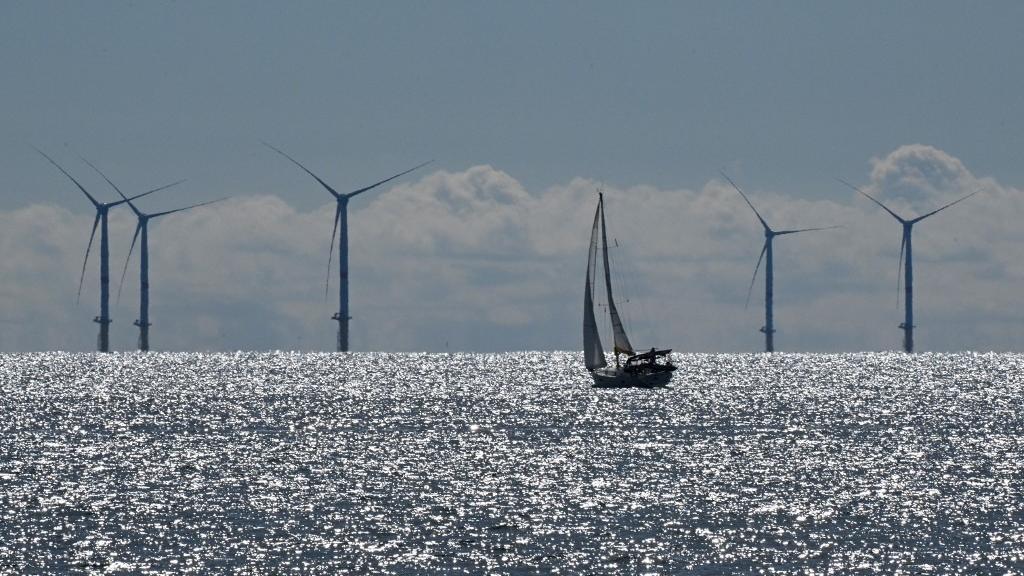 This file photo dated Sept 30, 2022 shows wind turbines on the first French offshore wind farm off the coasts of La Turballe, western France. (PHOTO / AFP)
This file photo dated Sept 30, 2022 shows wind turbines on the first French offshore wind farm off the coasts of La Turballe, western France. (PHOTO / AFP)
LONDON - Global energy demand rose 1 percent last year and record renewables growth did nothing to shift the dominance of fossil fuels, which still accounted for 82 percent of supply, according to the industry's Statistical Review of World Energy report on Monday.
Last year was marked by turmoil in the energy markets after Russia's special military operation in Ukraine, which helped to boost gas and coal prices to record levels in Europe and Asia.
The stubborn lead of oil, gas and coal products in covering most energy demand cemented itself in 2022 despite the largest ever increase in renewables capacity at a combined 266 gigawatts, with solar leading wind power growth
The stubborn lead of oil, gas and coal products in covering most energy demand cemented itself in 2022 despite the largest ever increase in renewables capacity at a combined 266 gigawatts, with solar leading wind power growth, according to the report.
"Despite further strong growth in wind and solar in the power sector, overall global energy-related greenhouse gas emissions increased again," said the president of the UK-based global industry body Energy Institute, Juliet Davenport.
ALSO READ: IEA: New renewables capacity additions to rise by a third in '23
"We are still heading in the opposite direction to that required by the Paris Agreement."
The annual report, a benchmark for the industry, was published for the first time by the Energy Institute together with consultancies KPMG and Kearny after they took it over from BP, which had authored the report since the 1950s.
Scientists say the world needs to cut greenhouse gas emissions by around 43 percent by 2030 from 2019 levels to have any hope of meeting the international Paris Agreement goal of keeping warming well below 2C above pre-industrial levels.
According to the report, global primary energy demand slowed down from the previous year's 5.5 percent, but demand was still around 3 percent above pre-pandemic levels in 2019.
Renewables, excluding hydropower, accounted for 7.5 percent of global energy consumption, around 1 percent higher than the previous year.
READ MORE: IEA: Global renewable energy capacity set to double in 5 years
Electricity generation was up 2.3 percent, slowing down from the previous year. Wind and solar power grew to a record share of 12 percent of power generation, again surpassing nuclear, which fell 4.4 percent, and meeting 84 percent of net electricity demand growth.
Coal's share in power generation remained dominant at around 35.4 percent, according to the report.
Global energy-related emissions, including industrial processes and flaring, were up 0.8 percent reaching a new high of 39.3 billion tonnes of CO2 equivalent, it added.


